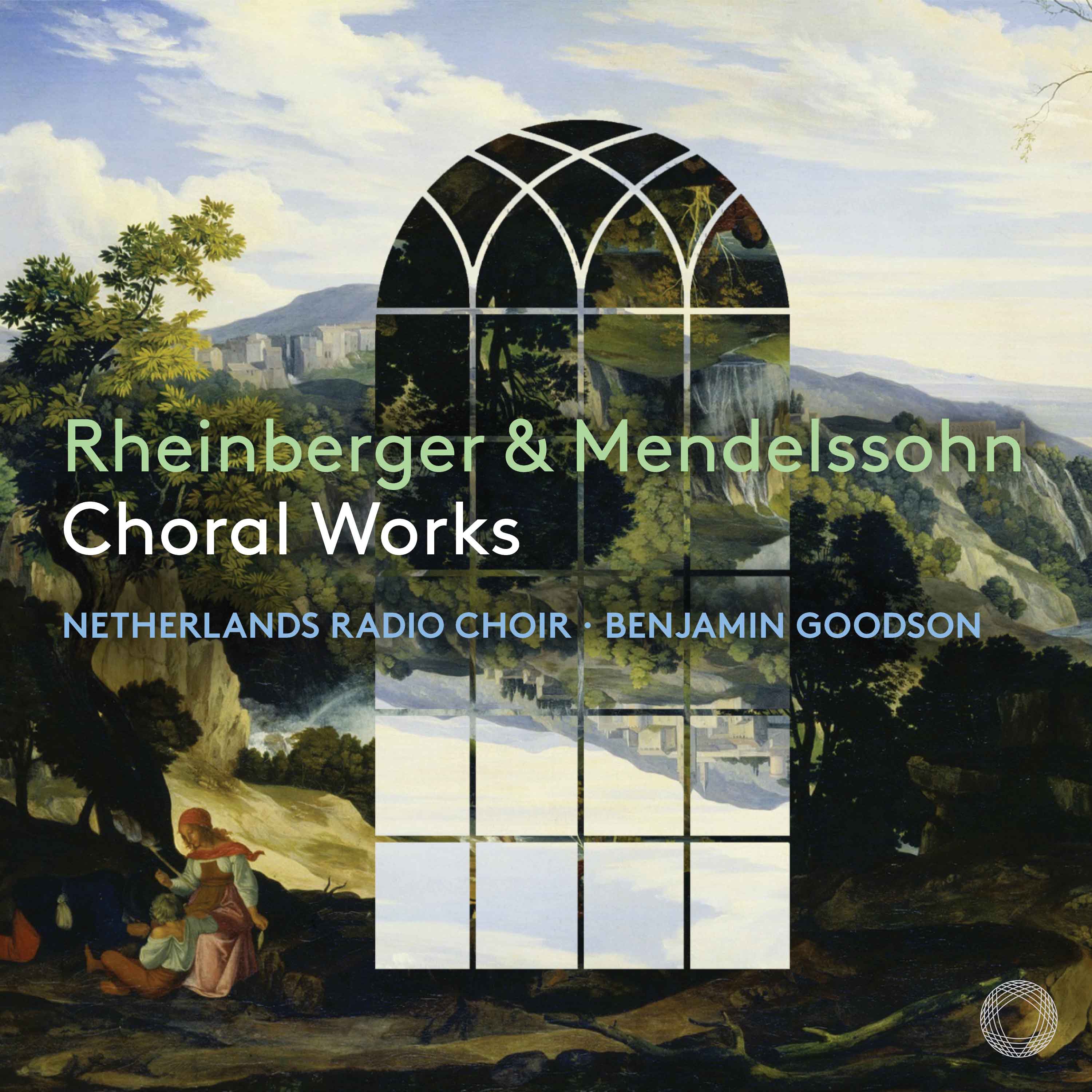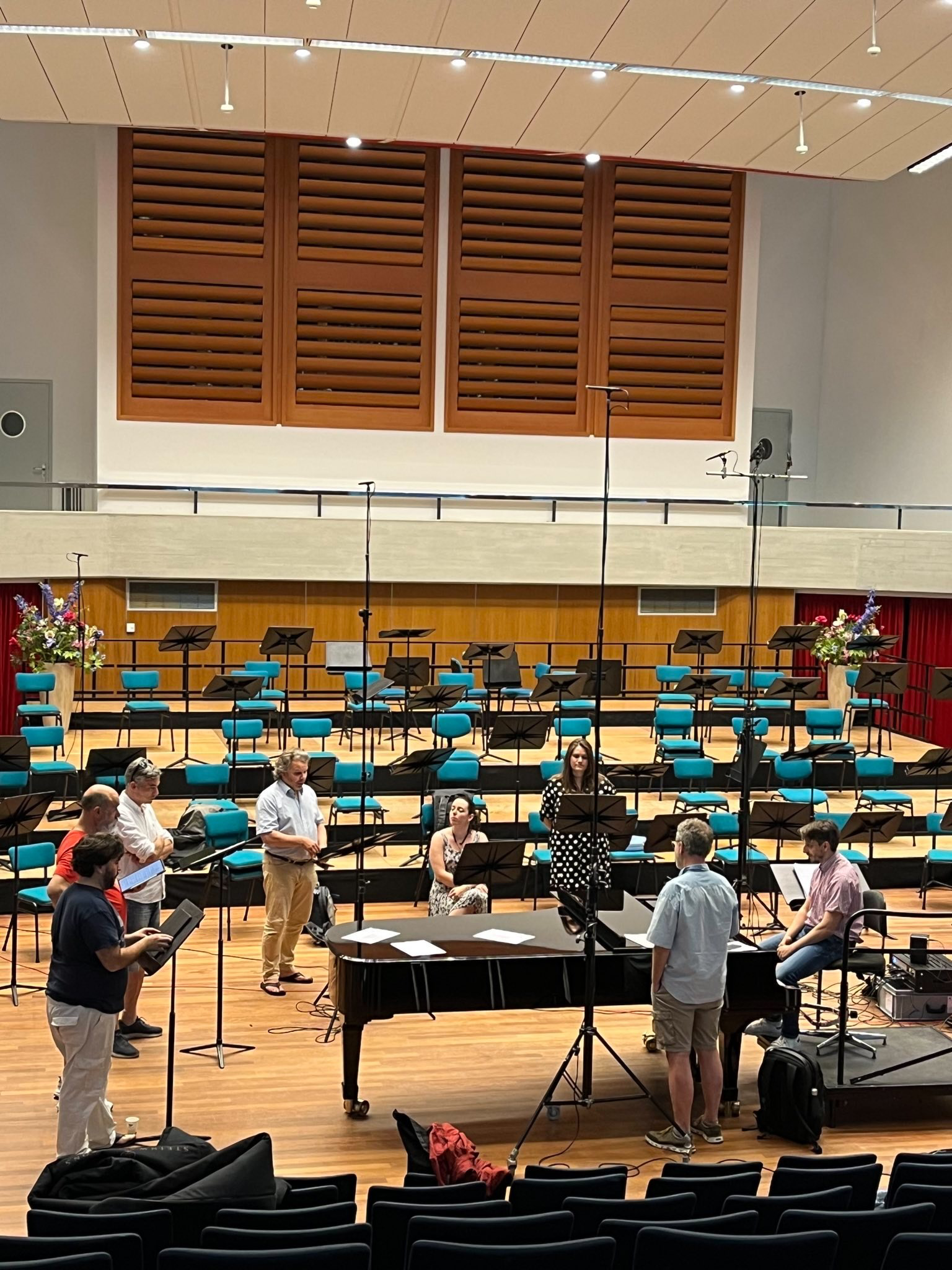Rheinberger and Mendelssohn: Radiant choral works
This recording is phenomenal ...

Sometimes discs surprise me: this is one. Sat there awaiting appraisal, the name of Luxembourgois composer Josef Rheinberger (1839-1901) looked unprepossessing enough, although perhaps I should have known how beautiful this music might be because of his “Abendlied” (actually the last track here, but heard in various concerts in VOCES8 series, including this combined performance by VOCES8 and I Fagiolini. The combination of Rheinberger and Mendelssohn is, as we shall se, really quite special.
Here’s the promo video for the disc, in which conductor Benjamin Goodson introduces the recording, the music and the choir:
We start with Rheinberger’s Mass in E flat, Op. 109, known as “Cantus Missæ”. This recording was Benjamin Goodson's first recording with the Netherlands Radio Choir as chief conductor. The piece holds especial significant for Goodson: he knew it early in life and performing it as a Lay Clerk at St Alban’s Casthedral (his first job after leaving university) was significant for him.
A piece of trivia: Josef Rheinberger was son of the Prince of Liechtenstein's treasurer. In 1877, Rheinberger became Hofkapellmeiser of Munich; two years later, he wrote the “Cantus Missæ” Mass for double choir. The composer himself described this as a “Symphonic mass”. Here, intricate counterpoint meets more Classical procedures such as developing themes. The textures move from intimate to the far grander textures of the Gloria and Credo, while for me, the chromatic harmonies of the fifth movement, “Benedictus,” are revelatory:
.. and just listen to the sense of joy, of abundance, and even of the impression of a live performance (despite the studio origins) in the second movement, “Gloria”:
Most astonishing, perhaps, is the heart-wrenching trajectory of the final “Agnus Dei” from pain to optimism. Chords shot with light deserve pin-point precision of both attack and tuning, and they receive both here:
Dedicated to the newly elected Pope Leo XIII, the “Cantus Missæ” sits in the grand choral tradition of Palestrina. It is certainly to be hoped that the Netherlands Radio Choir’s performance brings this piece fully into the public consciousness.

...and so to Mendelssobn: his Three Psalms, Op. 78 (1843/44, revised 1845). Although one opus, the three movements are given non-contiguous numbers in the Mendelssohn-Werkverzeichnis. Mendelssohn”s output is vast and yet concert performances tend to concentrate on just a few pieces, so it is great to have here here. Perhaps also try the Chandos recording of his String Quintets (Doric Quartet with Timothy Ridout: see Classical Explorer’s post on that disc here).
The first of the psalms, “Warum toben die Heiden” (Why do the heathen rage, Psalm 2) begins in great urgency. And just listen to the Netherlands choir's perfect ensemble and articulation:
Some might find the text of that rather inviting Mankind to worship the Chrisian God in fear ("Kiss the sun, lest he be angry, and ye Perth from the way when his wrath is kindled”), but Mendelssohn”s setting is masterly. As is that of Psalm 43, “Richte mich, Gott” (Judge me, God). The music here borrows (in its final section) from a setting by the composer of Psalm 42 for chorus and organ, written while Mendelssohn was in Berlin. “Richte mich, Gott” is an entreaty for help against an “ungodly action” and the music revels in alternation between upper and lower voices (here female and male voices):
he final setting of the group, “Mein Gott, warm hast Di mich verlassen?” (My God, why hast thou forsaken me?) was first performed on Good Friday, 1844, It is very multivalent, at times interior, at times overtly dramatic:
The stand-alone psalm setting Jauchzet dam Herrn, alle Welt (Shout for joy to the Lord, MWV B:45) sets Psalm 100 and dates from 1844. Rather more simple in construction, homephony is more the rule here. The Netherlands Radio Choir sings with a wonderful combination of clarity and warmth:
.. and so to the final Mendelssohn item, the Sechs Sprüche, Op. 79 (1843-45). “Sprüche” means “Sayings,” taken from teh newly revised Prussian legacy of 1829. Each piece is from a different part of the liturgical year (Advent, Christmas, New Year's Day, the Passion, Good Friday, and Ascension Day). The first is an aggregation of contrapuntal ones that calumniate in a triumphant “Alleluia”:
Each piece has its own “flavour”: the celebration Christmas, while the restrained processional of New Year's Day contains some lovely harmonic twists:
Perhaps most striking (to this listener, at least) is the harmonic anguish of “Am Karfreitage” (Good Friday), and the partial resolution on “Hallelujah”; the real resolution comes with the ascension, the very next piece:
The disc ends with that Rheinberger’s most famous piece, his “Abendlied” from the Drei Geistlicge Gesänge. Unpublished until as late as 1873, it was drafted when Rheinberger was a mere 15 years old (he did revise it). The text concerns Jesus' appearance, post-mortem, on the road to Emmaus. This is a piece of highest beauty, and here is given a performance to match. And ... a slightly off-piste performance to accompany the Netherlands Radio Choir performance: as a young lad, I know Rheinberger solely through his Horn Sonata, Op. 178. So imagine my delight when I found an arrangement fo the “Abendlied” for eight horns by James Naigus. So here they are, one after the other:
The recording is phenomenal. The venue was Miziekcentrum van de Omroep, Hilversum, produced by the choral expert Adrian Peacock assisted by Recording Engineer Tom Peeters. Katy Hamilton's fine notes complete a class release.
The disc can be purchased at Amazon via this link.
